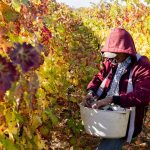
A draft report calls for additional taxes on gambling, cannabis or cigarettes to help stabilize funding for the subsidy program that protects Maine’s struggling dairy farms.
A task force is calling for added taxes on gambling, cannabis or cigarettes to strengthen Maine’s milk price stabilization program and help prevent more dairy farms from going out of business.
A draft report from the Maine Dairy Task Force also recommends asking voters to approve a multimillion-dollar bond issue that would support a variety of other proposals intended to bolster the state’s struggling dairy industry.
And it recommends establishing a minimum annual budget appropriation of about $7.5 million to reduce wide fluctuations in state funding for the price stabilization program and uncertainty related to highly volatile federal milk pricing, market conditions and other factors.
Regardless of how the money is raised, Maine’s milk subsidy must be fully funded each year to avoid further attrition in the state’s dairy industry, said Annie Watson, a dairy farmer and task force member who is president of the Maine Dairy Industry Association.
“That is going to be the most important recommendation,” Watson said. “That is a meaningful and effective program worth supporting.”
Watson said the task force is concerned about taxing other agricultural products to support the dairy industry, especially when the state faces increasing competition from all sectors for limited financial resources.
“But the loss of dairy farms triggers a chain of events that aren’t good for our communities,” Watson said. “They are the backbone of our rural communities and a linchpin in our local food supply.”
Reaction from cannabis industry leaders to a proposed tax increase has been swift and negative.
They say the task force ignored the fact that cannabis production costs are increasing as well, and they believe raising the cannabis tax would encourage consumers to buy unregulated products on the illicit market.
“It’s a terrible idea,” said Alex McMahan, CEO of The Healing Community MedCo., a five-store cannabis retailer and edibles producer based in Lewiston. He’s also policy lead of the Maine Cannabis Industry Association and a working group member with the Maine Office of Cannabis Policy.
McMahan noted that a recent legislative proposal to increase the cannabis tax to 12.5% was soundly defeated.
“This industry banded together, and it went down in flames,” he said.
Representatives of gambling interests and cigarette sellers didn’t respond to requests for interviews.
The task force was established through emergency legislation in March to study the challenges facing the state’s commercial dairy farmers and recommend ways to support the long-term sustainability of the industry.
Made up of farmers, legislators and industry representatives, the panel is seeking feedback on its recommendations by Nov. 22 and must submit its final report by Jan. 6.
The milk price stabilization program is a government subsidy to Maine dairy farmers that closes the gap between production costs and market prices. Funding it is complicated, however, because it requires the Maine Milk Commission to provide cost projections as much as five years in advance, according to the task force report.
But its benefits reach far beyond grazing fields, bolstering an industry that had $146.8 million in direct sales and a statewide economic impact of $230 million in 2022, according to the latest Northeast Economic Engine Report from Farm Credit East.
Maine’s dairy sector also directly or indirectly supports 14,600 jobs, provides over $835 million in total wages and contributes $155 million in state taxes, according to the International Dairy Foods Association.
The task force found that the milk subsidy “has proven to be a crucial economic development tool that invests directly in Maine’s rural communities, helping sustain and grow the state’s local food system and safeguard its rural character.” It also “plays a key role in sustaining Maine’s tourism economy, which depends heavily on the state’s iconic agricultural landscape.”
The report doesn’t state a preference on whether to tax gambling, cannabis or cigarettes, or how much money should be raised through these taxes to support the milk subsidy, other than to suggest it might be millions of dollars. The necessary amount is being evaluated and will be included in the final report, Watson said.
But it does provide background and rationale to levy additional taxes on each sector.
The milk subsidy already receives about $450,000 annually from a 0.5% assessment on slot machine revenue at the Oxford Casino, while yearly appropriations from the state’s general fund to the subsidy have ranged from zero to $20 million over the last 20 years.
The report suggests dedicating additional revenue from the casino or other gambling enterprises, including state, regional and national lotteries, bingo and other games of chance, off-track and other sports betting facilities, and online platforms. It does not say how much more revenue would be dedicated.
In suggesting a cannabis tax increase from 10% to 13.5%, the report notes that among 21 states that taxed recreational cannabis in 2024, rates ranged from 6% to 37%, with an average rate of 13%, according to the Tax Foundation. Seven states were 15% or higher, while only four were lower than Maine.
The report suggests adding 5 cents to the tobacco tax, which is currently $2 per pack and raised $145 million in 2023.
“Given the size of this industry, an incidental $0.05/pack additional tax would generate $7.25 million annually,” the report concludes.
The task force didn’t consider raising taxes on alcoholic beverages, Watson said.
Maine has lost more than 30% of its commercial dairy farms since 2020, leaving about 140 conventional and organic dairy farmers striving to operate amid rising costs, shifting market forces and climate change, according to the report.
It’s a national trend, with 1,600 dairy farms shutting down across the United States last year, according to the U.S. Department of Agriculture. Hardest hit were Michigan, Wisconsin and Pennsylvania.
With increasing competition from plant-based milks and bottled waters, Americans are drinking less milk than they used to, down from about 1 cup daily per person in 1970 to less than ½ cup today, according to the USDA. Still, milk is the most consumed dairy product, followed by cheese, frozen dairy products and yogurt.
Other recommendations in the nine-page report include expanding limited dairy processing capacity in Maine, reducing barriers to selling Maine dairy products in other states, and expanding access to a state agricultural loan program to support farm transfers to the next generation of dairy producers.
“We’re not going to stop all dairy farms from going under,” Watson said. “But we would be asking our communities to support our industry.”
You can now read the most important #news on #eDairyNews #Whatsapp channels!!!
🇺🇸 eDairy News INGLÊS: https://whatsapp.com/channel/0029VaKsjzGDTkJyIN6hcP1K























